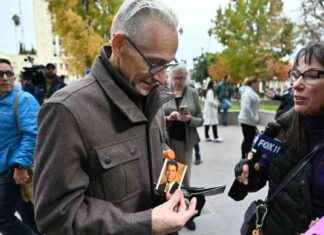50 years Ago, during one of the intermittent campaigns of excavation were carried out in the Herodion -fortress built by Herod the Great near Bethlehem, in the year 23 to.C. and where a little more than a decade, discovered the tomb of the king who, according to the Bible, ordered the massacre of the innocents – the archaeologists found, in a garden, next to a truss structure of the same time, numerous pieces of glass and pottery of the first century of our era, coins and arrowheads, dating to the first jewish revolt (66 d.C.) as well as numerous metal objects, among them, a simple ring of copper, whose origin was not revealed until now.
Society of Exploration of Israel published last week in her review of disclosure of archaeological findings, a study that claims that after a complete cleaning of the piece and a more in-depth analysis, they were able to decipher the Greek inscription of that ring would have been able to belong to Pontius Pilate or a member of his administration. “You have to be careful, in practice, what we have in a ring with the inscription Pilate but the relationship with him escapes us,” says the current director of the excavations, Roi Porat, in statements to the press in Hebrew.
The simplicity of the ring -the inscription “Pilatus” it frames a glass of wine carving, the emblem of the cavalry, and roman in this period – and the fact that it is copper and not gold, as would correspond to an object belonging to a figure of the political importance of Pontius Pilate, it makes you think to the experts who, probably, the case of a seal used by his subordinates to sign on his behalf
What the experts are not put in doubt is the fact that the piece has to do with Pontius Pilate, the roman governor of Jerusalem who according to the Gospel of Matthew, and washed his hands before sending Christ to the cross. A figure with a last name that is uncommon in the era, on which until now only had been found an inscription on a block of stone in the ruins of the city of Caesarea, on the Mobilbahis mediterranean coast of israel.
In parallel to this discovery, the israeli authorities also released this week the discovery of a mask, 9,000 years old, carved in limestone, found by a settler jewish settlement of Pnei Hever, in the hills of Hebron, in the west bank. For the experts this is an important discovery because it was 35 years ago that was not a mask of this type, and because of the 15 with similar features that exist in the world, so is only aware of the archaeological site of provenance of the newly discovered and other. “We believe that the mask is part of the spiritual world of the peoples of the neolithic,” says the archaeologist Ronit Lupu, the unit for Prevention of Theft of Antiquities from the Israel Antiquities Authority.
A detail that makes you think the expert israeli that could have given with a center of production masks from the Neolithic age, the period which witnessed the agricultural revolution and the men went from being nomads to settle down.
As many of the archaeological discoveries made in the Holy Land, these new findings, they are not exempt of controversy. In a place where the political conflict between israelis and palestinians splashes almost all spheres, these announcements on the part of the authorities to Hebrew occur weeks after the Palestinian Authority has reported to the UNESCO, the United Nations Organization for Education, Science and Culture, of which Israel appropriates what is found in the “archaeological sites-palestinian” for the benefit of their own tourism industry, while promoting tourism in jewish settlements in the west bank. “It is something that the world should not accept. All exploitation of natural in occupied palestine, including archaeological excavation, is a violation of international law”, ensures the spokesman of the palestinian Authority, Ashraf Khatib.







